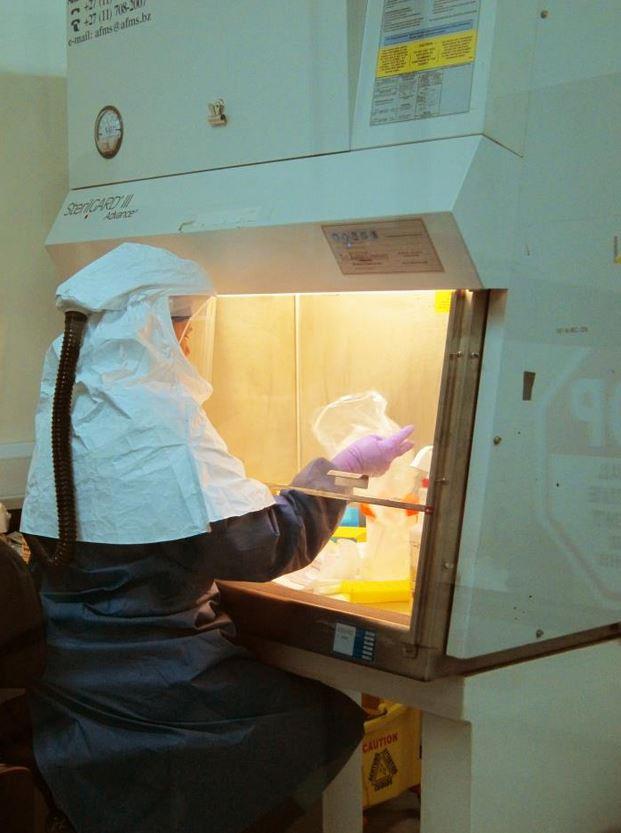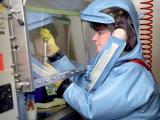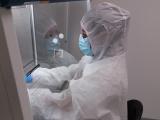The Trump Administration today released a new National Biodefense Strategy, along with an order from President Donald Trump that directs the Department of Health and Human Services (HHS) to take the coordinating lead and establishes a cabinet-level biodefense steering committee.
Some experts are praising the broad scope of the strategy, new elements that it covers, and the high-level attention and oversight built into the plan.
Presidential directive builds in high-level support
In a statement today, Trump said that implementing the steps would promote a more efficient, coordinated, and accountable biodefense enterprise. "Taken together, they represent a new direction in the Nation's defense against biological threats," he said.
The new strategy, spelled out in a 36-page document, covers deliberate attacks, accidental releases, and naturally occurring biological threats and pivots off lessons learned during the 2001 anthrax attacks, the 2009 H1N1 flu pandemic, and West Africa's 2014-16 Ebola outbreak.
Trump said biological threats come from many sources and know no borders. "They have great potential to disrupt the economy, exact a toll on human life, and tear at the very fabric of society," he said. "My Administration will take steps to improve our understanding of the risks posed by biological threats and to respond to them effectively and efficiently."
Steering committee, annual review
Robert Kadlec, MD, HHS Assistant Secretary of Preparedness and Response (ASPR) today fleshed out more details about the presidential directive, saying leaders from every federal department involved in biodefense will be part of the cabinet-level steering committee and will be led by HHS Secretary Alex Azar.
Azar has asked Kadlec to lead the day-to-day coordination team that supports the steering committee.
As part of the larger biodefense strategy, the coordination team will engage state, local, and territorial governments, along with private and international partners. Kadlec called the plan's coordination of federal activities and budgets across a full range of biodefense sectors and activities "a monumental step forward."
"Being truly successful will require a whole-of-nation approach with government agencies at all levels and non-government stakeholders playing important roles in providing support and guidance," he said.
Trump in his presidential directive today also directs his national security advisor to annually review biological threats and prioritize biodefense actions, which he said will better enable the government to anticipate, prevent, prepare for, and respond to biological incidents.
Plan has 5 key goals
The National Biodefense Strategy has five goals containing several objectives that reflect a layered risk management approach to countering biologic threats:
- Enabling risk awareness to guide decision-making across the biodefense enterprise at the strategic and operational levels, covering research, surveillance, and detection
- Ensuring biodefense capabilities to prevent biological incidents, which include minimizing the chances of lab accidents and stepping up actions to prevent hostile actors from obtaining or using biological material, equipment, or expertise, as well as recognizing the "dual use" nature of biotechnology
- Ensuring preparedness to reduce the impacts of biothreats, such as maintaining a vibrant science and technology base to support biodefense, ensuring a strong public health infrastructure, exercising response capabilities, developing and distributing medical countermeasures, and collaborating with international partners
- Responding rapidly to limit the impact of biological incidents, emphasizing the importance of information sharing, coordinated response and investigation, and effective public messaging
- Facilitating recovery after an incident, providing support, long-term mitigation, and steps to limit impacts on other parts of the world
"The risks from biological threats cannot be reduced to zero—but they can and must be managed," the government said in the plan.
Expert impressed, but more details needed
Tom Inglesby, MD, director of the Johns Hopkins Center for Health Security, said today that he was impressed by the scope of the effort. "It's the first national strategy that encompasses natural, deliberate, and accidental biological threats, and that addresses threats to humans, animals, and plants."
In the past, work in all of the areas covered by the goals was driven by different documents developed years apart in different presidential administrations, he said.
Another new element is that the national security advisor is the lead for the strategy, and Inglesby said the president's national security priorities are more likely to get more attention and resources.
"The fact that it is published along with a Presidential Memorandum adds power to it all, including the direction that budgets will need to respond to this strategy," he said.
Another good development is that the plan spells the day-to-day coordination and execution by the HHS secretary, which builds in top-level accountability and clearly assigned responsibility, according to Inglesby.
"But by same token it will be important and challenging to make sure that the many other agencies of government that need to be involved in preventing and preparing for biological threats stay engaged and bring their full capabilities to bear," he said. For example, Inglesby notes that the Centers for Disease Control and Prevention, the National Institutes of Health, and the Food and Drug Administration are where the main HHS capabilities reside, but other agencies—including the departments of State and Defense, and the intelligence community—also play key roles.
"It would not be good if other agencies step back from the biodefense mission because they perceive their roles to be diminished," he said.
The administration's new strategy rightly recognizes biotechnology benefits while calling out the need to strengthen biosafety and biosecurity in the life sciences, including a call to promote global oversight of high-consequence research, such as that involving pandemic pathogens, Inglesby said.
"There is no real global dialogue, let alone oversight in most countries, around this realm of research now—having this set forth in the strategy hopefully will motivate real action internationally," he said.
Inglesby said another encouraging element of the plan includes a commitment to working with other countries to strengthen the capacity to fight infectious diseases. "I would have liked to see specific mention to the Global Health Security Agenda by name, but it is very heartening to see the international commitment to capacity building for epidemic response," he said, noting that the release of a Global Health Security Strategy is expected next month, which might include more details about those activities.
Other notable and novel elements of the new plan include a stronger emphasis on risk assessment and the priority given to forecasting and modeling, Inglesby said.
"What is also new is the focus on secondary impacts and major disruptions to society, economy, and democracy itself—focusing on these major issues is important because these are the kinds of risks that can emerge in a severe pandemic," he noted.
Inglesby said he's hopeful that federal officials follow up with more details on how they will implement the new strategy, and he hopes, a planning document spelling it out will follow.
See also:
Sep 18 White House statement
Sep 18 HHS ASPR blog post
Sep 18 National Biodefense Strategy report




















